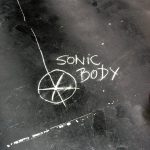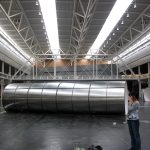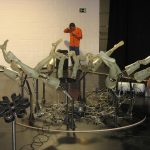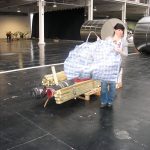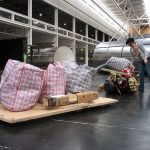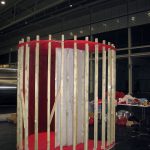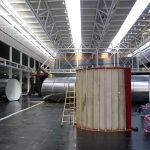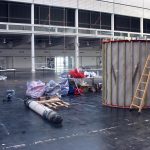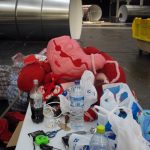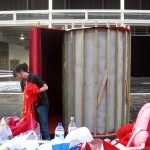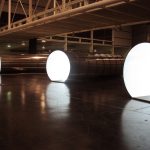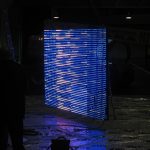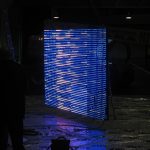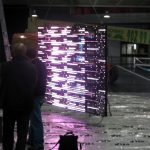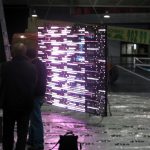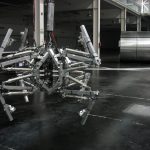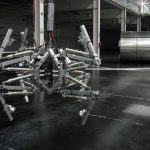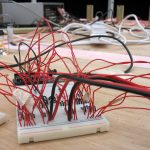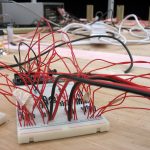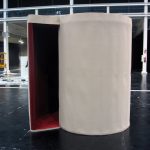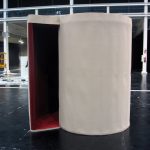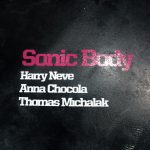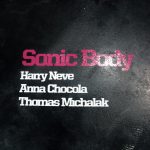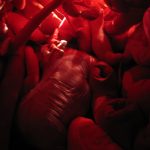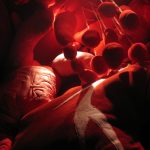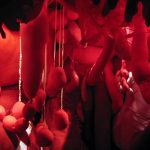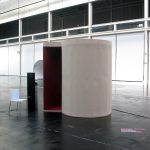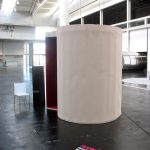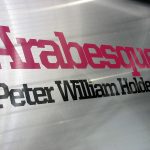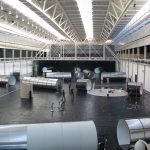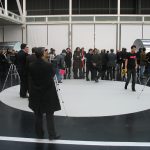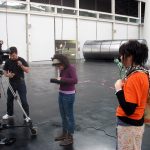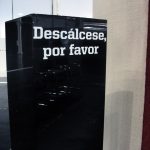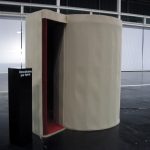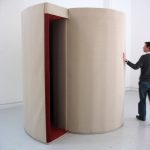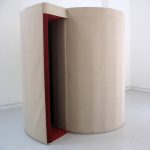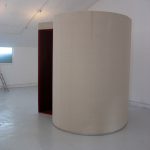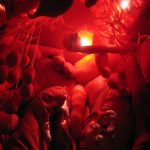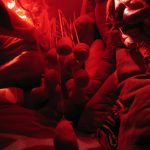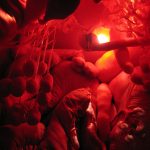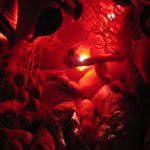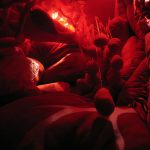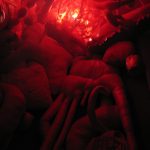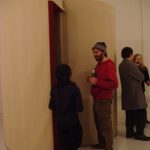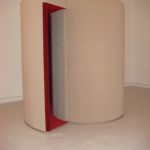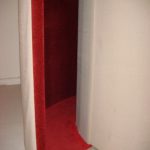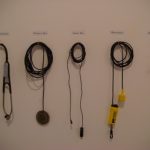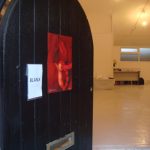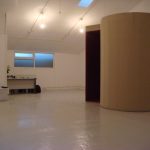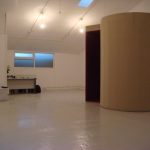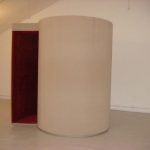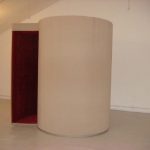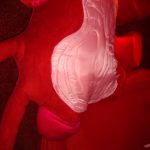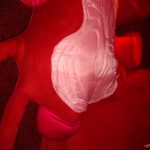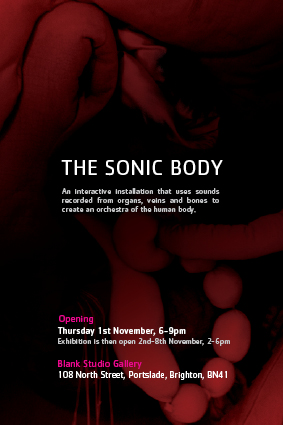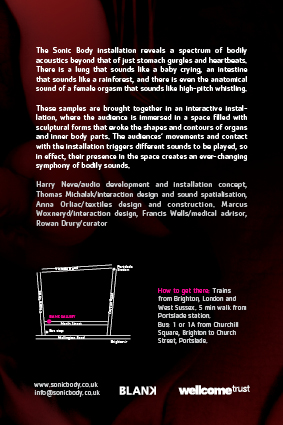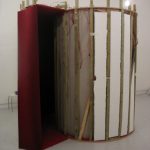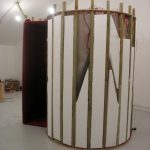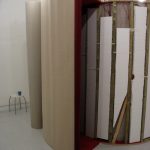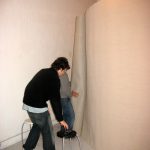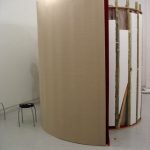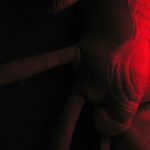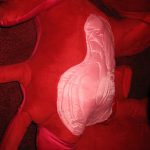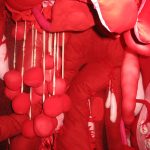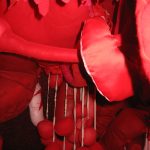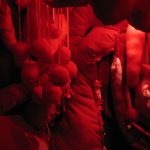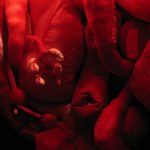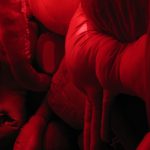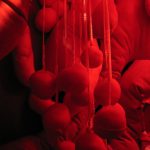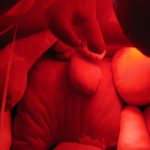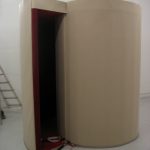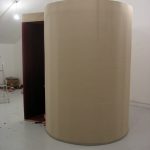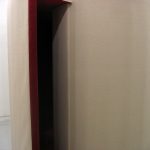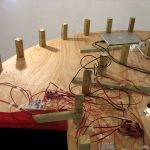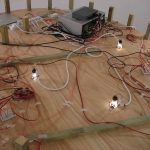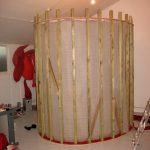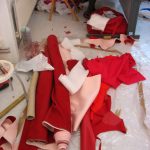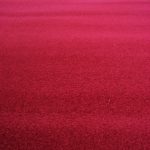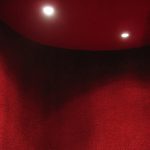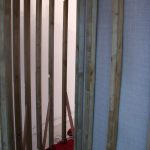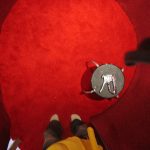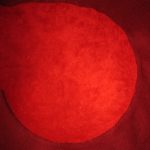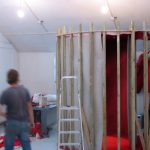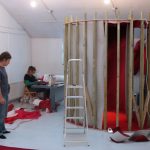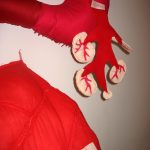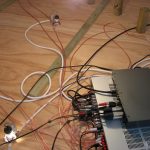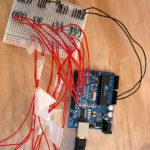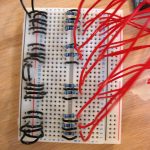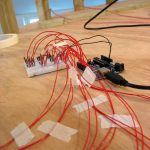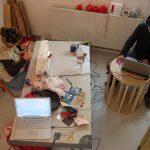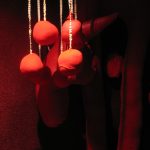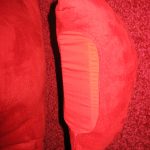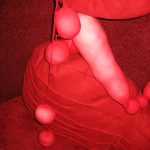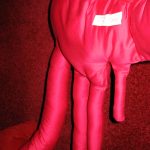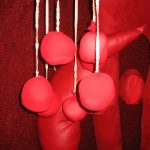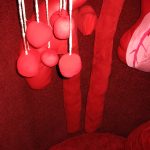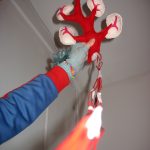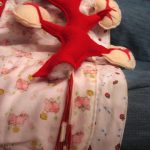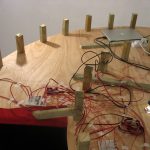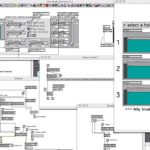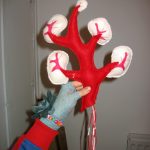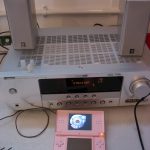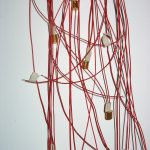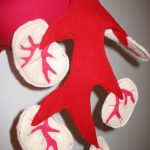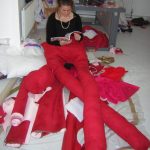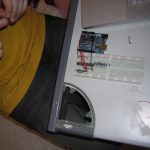The Sonic Body entered the Celeste Prize Competition in the Installation/Sculpture category.
Category Archives: Blog
Move Festival – ExpoCoruna
The Sonic Body was presented at the Move Festival ( ExpoCoruna ), in A Coruna ( Spain ) from the 13th to the 16th of November 2008. The festival was great and we met some really interesting artists with different backgrounds and vision. There was some good pieces, especially Arabesque installation by Peter William Holden.
- The Sonic Body Placement
- Inside the Fair
- Neighbour
- Unpacking
- Unpacking
- Getting there
- Almost done
- Installing
- Work station
- Filling the Sonic Body
- Fair at night
- Broken screen
- Broken screen
- Buggy screen, nice.
- Buggy screen, nice.
- robots
- robots
- wires
- wires
- done!
- done!
- Sonic Body crew
- Sonic Body crew
- Inside the Sonic Body
- Inside the Sonic Body
- Inside the Sonic Body
- Finished
- Finished
- Peter William
- During the fair
- Opening
- Anna being interviewed by spanish culture show
- “Take your shoes off please”
- The Sonic Body
Move Festival
MOVE festival, EXPOcoruna, A Coruna Spain, 13-16 November 2008
http://www.move2digital.net
Video, Recordings and the last pictures
Video
We’ve put a video together to show the Sonic Body in action. It’s short but gives an idea of the installation. Of course you don’t really get all the atmosphere, the feel of the fabric and the depth of the surround sound.
Sound
We also did some recordings with the idea of doing a DVD using 5.1 surround sound, This is one segment of the recording, but merged into stereo. You have a background layer made of a sub rumble which have a slow evolution. On top of this you will hear most the different sounds that was triggered/generated by the person in the Sonic Body.
[soundcloud id=’24620535′]
Pictures
- Outside – Scale
- Outside
- At the Blank Gallery
- Ceiling
- Balls
- Inside the Sonic Body
- Inside the Sonic Body
- Inside the Sonic Body
- Inside the Sonic Body
Rhizome review
“The looped results (of the sonic body) are addictively danceable mutations of minimal techno. As science looks ever outward, it seems culturally significant that such alien music would transmit from the internal network of our very bodies.” David Michael Perez, from My Body, My Discotech, review of the Sonic Body in Rhizome
Installation Finished/Exhibition at Blank
The installation is finished and on show at Blank Gallery, Brighton until November 8th 2007.
- Visitors waiting for their turn
- The Sonic Body
- “The corridor”
- Some of the microphones
- Gallery Entrance
- Inside the Blank gallery
- Inside the Blank gallery
- the Sonic Body
- the Sonic Body
- Shapes
- Shapes
Sonic Body flyer
Final Touch
This the final step of the Sonic Body Structure. We realised that we unconsciencely made a analogy of the human body in our structure. Bones = Wood, Carpet = Skin, Wire and Sensors = Nervous Systems and Senses, Flesh = Foam, etc..
Probably a common thing as inventions often used to be inspired by the human body. Our installation is just a lot less complex in a way.
A bit more of the messy wiring system of the installation, could have been worse. The Sonic Body is actually “plug n play”. There is only one power plug coming out of it. You plug it, turn the computer and the amplifier on, press play. It’s ready for mass production.
- Entrance
- Polyester and Cables
- Attaching outside carpet
- Attaching outside carpet
- Almost
- Inside
- Embroidery
- Inside
- Coming in
- Balls
- Holes
- Hidden Speaker
- balls
- Inside
- Entrance
- Finished!
- Entrance
- Messy wiring
- Messy wiring and lights
development: details
We are in the last 2 weeks of work now. Here are some pictures of last week-end’s work and some precision on the technological side of the project.
We are using Max/Msp for the sound spatialization and arduino for the hardware/sensors.
At first I wanted to use only open-source sofware and hardware. I learned to use max at school and haven’t used it for a while. So I didn’t have enough time to get use to pd on this project. It would had slown me down to try to find the equivalent object’s name in pd.
I was going to use processing+live for the sound and interface, as it’s mainly how I work now in this kind of projects, except that before it was with Director. It was easier to only use Max for Sonic Body as I didn’t have time to build a all system from scratch, even if the combination of processing and live is really really cool for interactive music. Compared to Max, or pd, processing is great for visual and live is easy and amazing for music, especially with plugins.
I created a system with Max to manage all the sensors and the spatialization. Each sound layers or sensors/groups of sensors have a ‘select folder’ button so it’s really easy for Harry and I to move folders or change sounds for each element. I wanted something quite flexible so we don’t have to worry ( too much ) about the technique when working on the sound landscape. At first I was going to use my own spatialization patch but I learned that sometimes it’s better to use ready-made programs. So as Max can integrate vst in his patches, I used a spatialization plugin. Of course, this plugin only manages the surround thing, I had to program a lot of things around this plug to adapt it to our needs, automations and again to make it user-friendly. We can set lots of different parameters like speed, craziness, rotation, placement, apparitions, etc… I will later put some of the patches that I made for the SonicBody on the blog.
Arduino is a Open-source hardware that emulates processing for the programming. So it’s really easy to use and have a great community, like processing, made of artists and programmers. The Arduino website gives lots of tutorials and the forum is really helpful. For the sensors we are mainly using vibrating non-mercury tilt sensors and piezos’. It’s my first big installation that uses so much sensors and it’s really a performance on itself to organize all this.
We are really happy about the structure, and specially about the atmosphere inside. We have no reverb and it’s really sound proof. The cocoon feeling is close to what we had imagined. It feels like a sound recording cabin ( but better ). We cannot put more photos of the inside to keep the mystery. After the exhibition there will be loads more though!
- Carpet
- Outside
- Fabric
- Our red carpet
- Lights fitted
- Entrance
- Fitting inside wall carpet
- Floor
- Working
- ???
- Labelling Shapes
- Sound system
- Arduino
- breadboard
- Wiring sensors
- working station
- First shapes in
- Hidding speaker test
- Shapes
- Labelling
- First shapes fitted with sensors
- First shapes fitted with sensors
- Wire
- Getting ready
- Top of the Sonic Body
- Max Patch
- Proud

